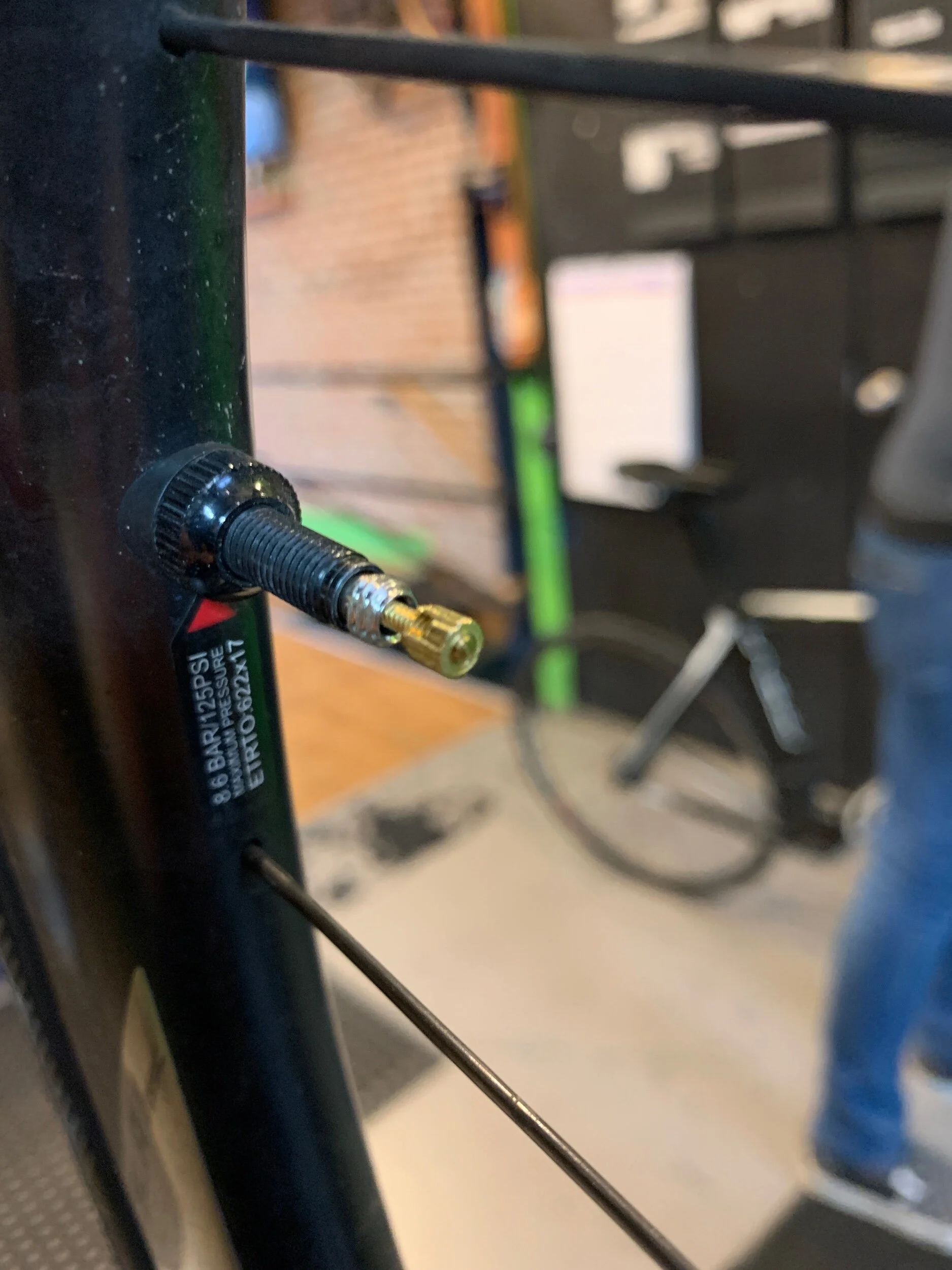Review: A Convert to Tubeless
(2019) My personality is much like the peloton of today. It requires a lot of persuading, a lot of charts and graphs, and an absurd amount of personal experience to convert me from tried-tested-and-true applications. Some may say I am a creature of habit but I have always been a fan of the adage, “If it ain’t broke…”
Several years ago I had wheels built up with, what I decided was a throwaway selling point: the rims were tubeless ready. The wheel builder went so far as to lay a strip of tubeless ready rim tape. I thanked him for his time by relieving him of two pairs of Veloflex Master gumwalls and two tubes. I covered thousands of miles this way, even riding with another cyclist whose wheels I copied from hubs to rims to the wheelbuilder. I stopped at the tubeless system and thanked him for his wheel inspiration by replacing a couple of my tubes on his rides. The day I switched to tubeless would be the day I traded rim brakes for disc brakes.
Call me a sellout; call me a gimmick fan, but I now roll on a tubeless system. The decision was not easy. When the new bike was whipped out of its shipping box, I was asked whether to go tubeless or not. I had the new clincher tires ready to be installed. Yet there was the feeling that the bike was designed, even encouraged to be set up tubeless. I asked myself which option I would normally go with (tubes) and went the opposite. It was time I joined the 21st century. But what was I to expect from the third road tire system available?
There are three tire systems in road cycling: Tubulars, clinchers, and tubeless. As much as I would love to ride traditional tubulars (known as tubs) I don’t have time or money to devote to an all-or-nothing stance to them. They require specific rims, scant maintenance, but are more predictable when punctured. Tubular users can continue down the road on a deflated tire. Clinchers are the most common among the standard cyclist for its ease of repair and tube/ tire options. The biggest issue with clinchers is the pinch flat, the most common rupture in the system.
One piece of maintenance involves the replacement of valve cores on account of sealant making them impossible to unscrew. Here is a new valve core after replacing a clogged one.
Tubeless systems have bragged about a couple of advantages over the two systems. The pinch flat is eliminated because of the lack of an inner tube. The system itself can run at lower pressures because of this. It can also run at much higher pressures because they won’t dislodge from the rim. According to tire companies, tubeless tires are lighter (no tube), faster, and provide less rolling resistance. Because the system relies on sealant, nagging punctures are instantly fixed. The spinning wheel and the sealant fluid work together to close the hole, and any tubeless cyclist brags about the amount of sealant spots on tires. Each spot is a puncture averted.
After the crucial decision to join the tubeless crowd I hoped I chose wisely. The most important part was having a mechanic set up the system. I was not about to cut corners here. Then I went out into the road-riding world and attacked the roadside obstacles with audacity. The first test came in a gravel event. Not many people would take a new wheel set system onto such an event but I thought it was the perfect test. It was impressive how the tires held up. I wasn’t one of the participants on the side of the road waiting for the mechanic support.
The testing continued in two other puncture inducing environments. A surprising storm caught me out miles from home. I pushed on along the shoulder of a state road full of glass and debris, definitely the worst place to puncture. Dump trucks sent bow waves of water to blur vision and obscure obstacles. Throughout all of this, the tubeless system carried on. The final test came in a sizzling ride in a beach town whose ample shoulder has become unkempt over the years. Small car parts, gravel, glass, and tools now occupy the cycling lane. Hot weather always increases inner tube sales. Yet again the tubeless system held up; the cycling wallet remained stowed.
Questions remain regarding puncture repair. One area of insistence includes a pair of latex gloves. I assume that is optional based on how pioneer the cyclist is. The other, should the casing be ruptured, involves a valve core puller. If the casing is broken beyond repair, a person can empty the sealant, cram an old-style tube into the casing after removing the valve core, and boot the tire. Tubeless systems exist in both the tubular realm for reliability and clincher realm for repair. It should be noted that if the tubeless casing compromised, what tire system would have stood up to the tear?
Over the last few weeks I have experimented with decreasing tire pressure. Fans of tubeless brag about the lower pressures one can ride with confidence. Even at ten pounds PSI fewer I feel the casing bouncing around on chipped and sealed roads. That’s the beauty of the system: I can keep reducing the pressure until I have found the sweet spot. Back to that whole concept of, “If it ain’t broke…” Tubeless ready systems seem to break less, why question that?





